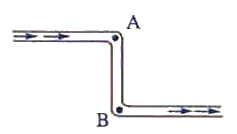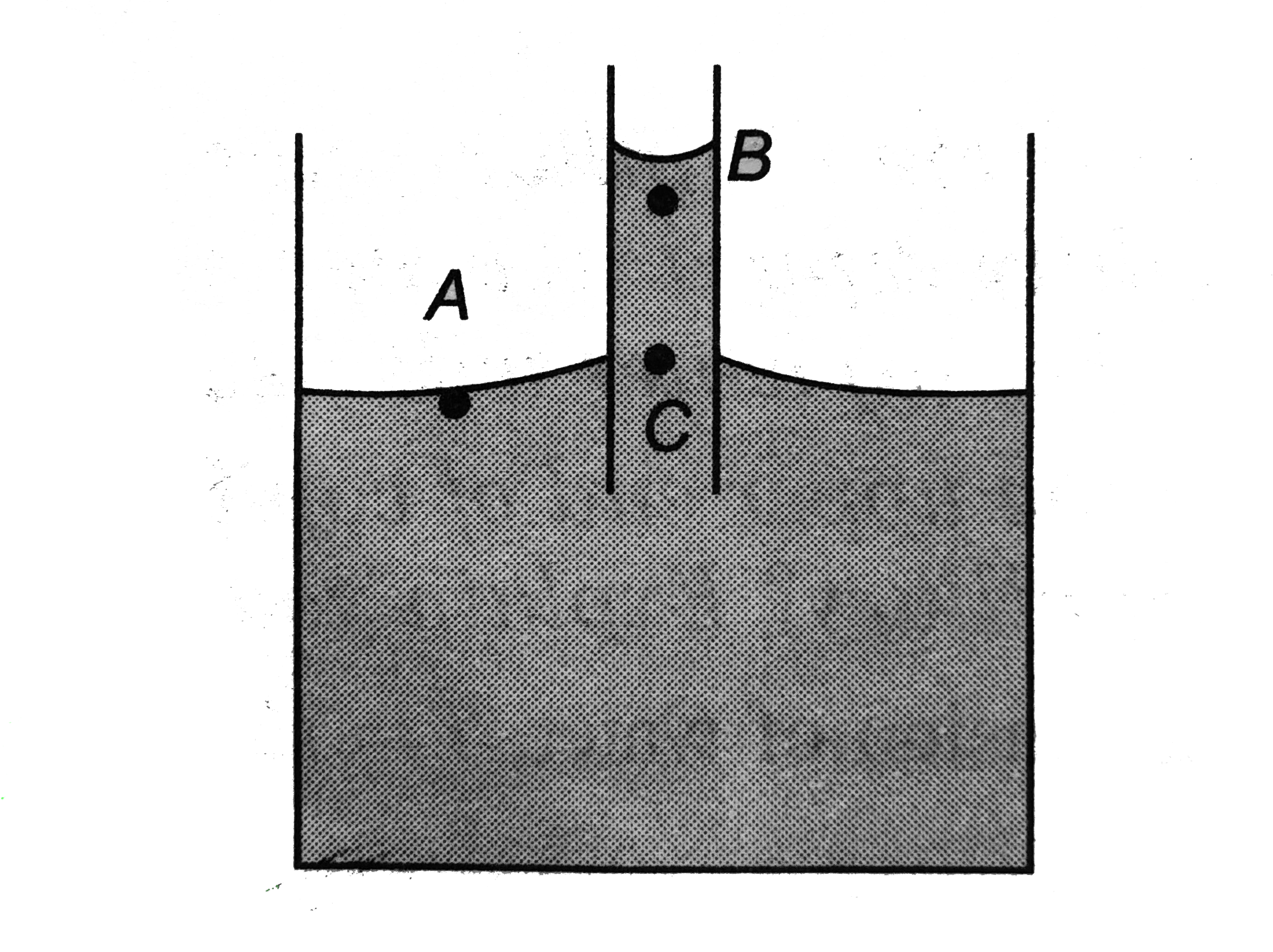In the figure, an ideal liquid flows through the tube, which is of uniform cross - section. The liquid has velocities υAandυB, and pressures pAandpB at points A and b respectively
a) υA=υB
b) υB>υA
c) pA=pB
d) pB>pA

a and b are correct
c and d are correct
a and d are correct
All are correct
The correct Answer is:C
Topper's Solved these Questions
- MECHANICAL PROPERTIES OF FLUIDS BOOK - AAKASH SERIESCHAPTER - MECHANICAL PROPERTIES OF FLUIDS EXERCISE - EXERCISE-IB (ASSERTION & REASON)
46 Videos
- MECHANICAL PROPERTIES OF FLUIDS BOOK - AAKASH SERIESCHAPTER - MECHANICAL PROPERTIES OF FLUIDS EXERCISE - EXERCISE-2
68 Videos
- MECHANICAL PROPERTIES OF FLUIDS BOOK - AAKASH SERIESCHAPTER - MECHANICAL PROPERTIES OF FLUIDS EXERCISE - EXERCISE-3
43 Videos
- LAWS OF MOTIONBOOK - AAKASH SERIESCHAPTER - LAWS OF MOTIONEXERCISE - PRACTICE EXERCISE
108 Videos
- MECHANICAL PROPERTIES OF SOLIDSBOOK - AAKASH SERIESCHAPTER - MECHANICAL PROPERTIES OF SOLIDSEXERCISE - EXERCISE - 3
26 Videos
Similar Questions
Figure shows an ideal fluid flowing through a uniform cross-sectional tube in the vertical tube with liquid velocities vA and vB and pressure PA and PB. Knowing that offers no resistance to fluid flow then which of the following is true.

View SolutionAn ideal fluid is flowing through the given tubes which is placed on a horizontal surface. If the liquid has velocities VA and VB and pressure PA and PB at point A and B respectively, then the correct relation is (A and B are at same height from ground level. the figure shown is as in the system is seen from the top):

View Solution
Knowledge Check
In the figure, an ideal liquid flows through the tube, which is of uniform cross section. The liquid has velocities vA and vB, and pressures PA and PB at the points A and B, respectively. Then
 AvA=vBBvA>vBCPA=PBDPB>PA
AvA=vBBvA>vBCPA=PBDPB>PAIn the figure, an ideal liquid flows through the tube, which is of uniform cross section. The liquid has velocities vA and vB, and pressures PA and PB at the points A and B, respectively. Then
 AvB>vABvB=vACPB<PADPB=PA
AvB>vABvB=vACPB<PADPB=PAIn the figure, an ideal flows through the tube, which is of uniform cross-section. The liquid has velocities vA and vB and pressures pA and pB at points A and B respectively.
(i) vA=vB
(ii) vB>vA ltbr gt (iii) pA=pB
(iv) pB>pA.
 .A(i),(iii)B(i),(iv)C(ii),(iii)D(ii),(iv)
.A(i),(iii)B(i),(iv)C(ii),(iii)D(ii),(iv)

A disc is rolling (without slipping) on a horizontal surface. C is its centre and Q and P are two point equidistance from C. let υp,υQ and υC be the magnitude of velocities of points P, Q, and C repsectively,
(a). υQ>υC>υP
(b). υQ<υC<υP
(c). υQ=υP,υC=12υP
(d). υQ<υC>υP
View Solution
A disc is rolling (without slipping) on a horizontal surface. C is its centre and Q and P are two point equidistanec from C. let υp,υQ and υC be the magnitude of velocities of points P, Q, and C repsectively,
(a). υQ>υC>υP
(b). υQ<υC<υP
(c). υQ=υP,υC=12υP
(d). υQ<υC>υP
View SolutionFigure shows an ideal fluid flowing through a uniform cross-sectional tube in the vertical tube with liquid velocities vA and vB and pressure PA and PB. Knowing that offers no resistance to fluid flow then which of the following is true.

View SolutionAn ideal fluid is flowing through the given tubes which is placed on a horizontal surface. If the liquid has velocities VA and VB and pressure PA and PB at point A and B respectively, then the correct relation is (A and B are at same height from ground level. the figure shown is as in the system is seen from the top):

View SolutionA capillary tube is dipped in a liquid. Let pressure at point A,B and C be pApB and pC respectively, then

View Solution
